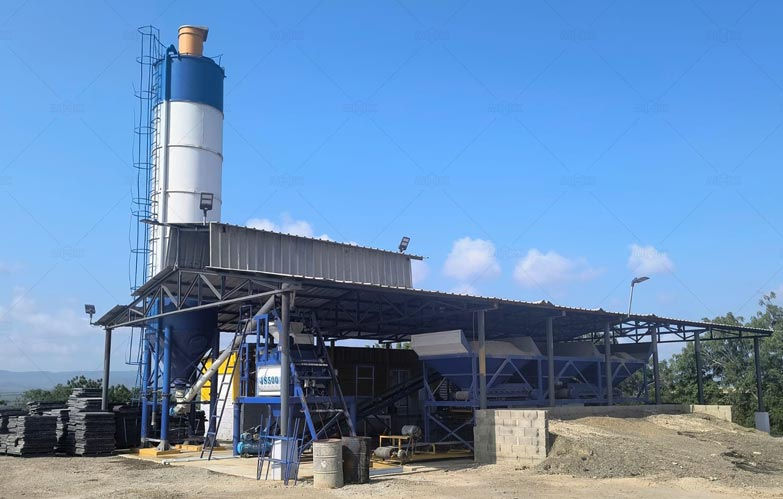Can Customized Design Save Costs for Your Concrete Plant?
- Aimix maquina

- 23 abr
- 3 Min. de lectura
In today’s fast-paced construction industry, cost-efficiency is just as important as output capacity. When planning to set up or upgrade a concrete production facility, businesses often wonder whether a one-size-fits-all solution is the most economical option. The truth is, customized concrete plant design can often lead to significant savings—both upfront and in long-term operations. Whether you're considering a concrete plant for sale(planta de concreto en venta), a mobile concrete plant, or a mini concrete plant, tailoring the layout and specifications to your project needs can deliver real financial benefits.
Understanding Customized Concrete Plant Design
Customized plant design refers to configuring a concrete production system based on specific job site conditions, production volume, material storage needs, transportation logistics, and budget. This could involve modifying layout dimensions, selecting suitable mixers, adjusting storage capacity, or integrating automation systems. Rather than over-investing in capacity or features that may not be used, custom designs ensure every component contributes directly to your goals.

Why Customized Design Can Reduce Costs
Avoid Over-Specification
One of the most common issues in pre-packaged concrete plant systems is over-specification. A business might end up paying for high-capacity mixers or oversized silos that exceed its actual requirements. Customizing your plant allows you to invest only in what you need, whether it’s a mini concrete plant(mini planta de concreto) for a small urban site or a portable setup for temporary projects.
Optimize Site Space and Layout
Every construction site has unique space constraints. Custom plant designs take these into account, helping to avoid costly modifications or the need for additional land. An efficient layout reduces conveyor lengths, improves material flow, and shortens cycle times—all of which save energy and labor.
Tailor Automation for Your Workflow
Not every plant requires full automation. In some cases, partial automation or manual controls are sufficient, especially for smaller operations. Custom design lets you choose automation levels that match your budget and workforce skills, avoiding unnecessary technology expenses.

Customized Designs for Different Types of Plants
Mobile Concrete Plants
A mobile concrete plant(planta de hormigon movil) benefits greatly from customization. Since mobility is key, manufacturers can design a plant that is compact, easy to install, and quick to dismantle without sacrificing capacity. Custom trailer-mounted units with foldable components can significantly reduce setup time and transportation costs.
Mini Concrete Plants
For limited-scale projects or startups, a mini concrete plant offers a budget-friendly entry into the concrete production business. Customization here might involve choosing smaller silos, compact mixers, and simplified controls—lowering the initial investment while still ensuring high-quality output.
Medium to Large Concrete Plants
When looking for a full-sized concrete plant for sale, custom design plays a major role in aligning the plant’s capability with expected production volumes. You can also choose from various material feeding methods (belt, skip hoist, etc.) and storage types depending on your mix designs and job demands.
Cost Savings Beyond Equipment
Lower Transportation and Installation Costs
A plant designed to fit your specific location reduces shipping volume and on-site installation time. Modular designs and integrated components mean less machinery to move and fewer assembly hours—leading to a faster return on investment.
Reduced Maintenance and Downtime
When each system is sized and selected appropriately, the strain on components is minimized, reducing wear and tear. This means fewer breakdowns, longer equipment life, and reduced maintenance costs over the plant’s lifespan.
Energy Efficiency
Custom-designed plants often feature energy-saving configurations, such as shorter conveyor systems, optimized mixing cycles, or variable-frequency drives. These improvements lead to lower electricity usage and help reduce your carbon footprint.
How to Get Started with a Custom Plant Design
Assess Your Needs: Consider your average and peak production requirements, space limitations, and transport logistics.
Consult a Trusted Manufacturer: Work with suppliers that offer design consultations and flexible manufacturing.
Plan for Scalability: Choose a layout that allows room for future expansion or component upgrades.
Conclusion
Investing in a customized concrete plant design can significantly reduce both upfront and ongoing costs while improving production efficiency and flexibility. Whether you are evaluating a concrete plant for sale, planning a mobile setup, or launching with a mini concrete plant, customization ensures you’re not paying for features you won’t use. It’s a smarter, leaner, and more strategic way to build your concrete production capabilities.



Comentarios